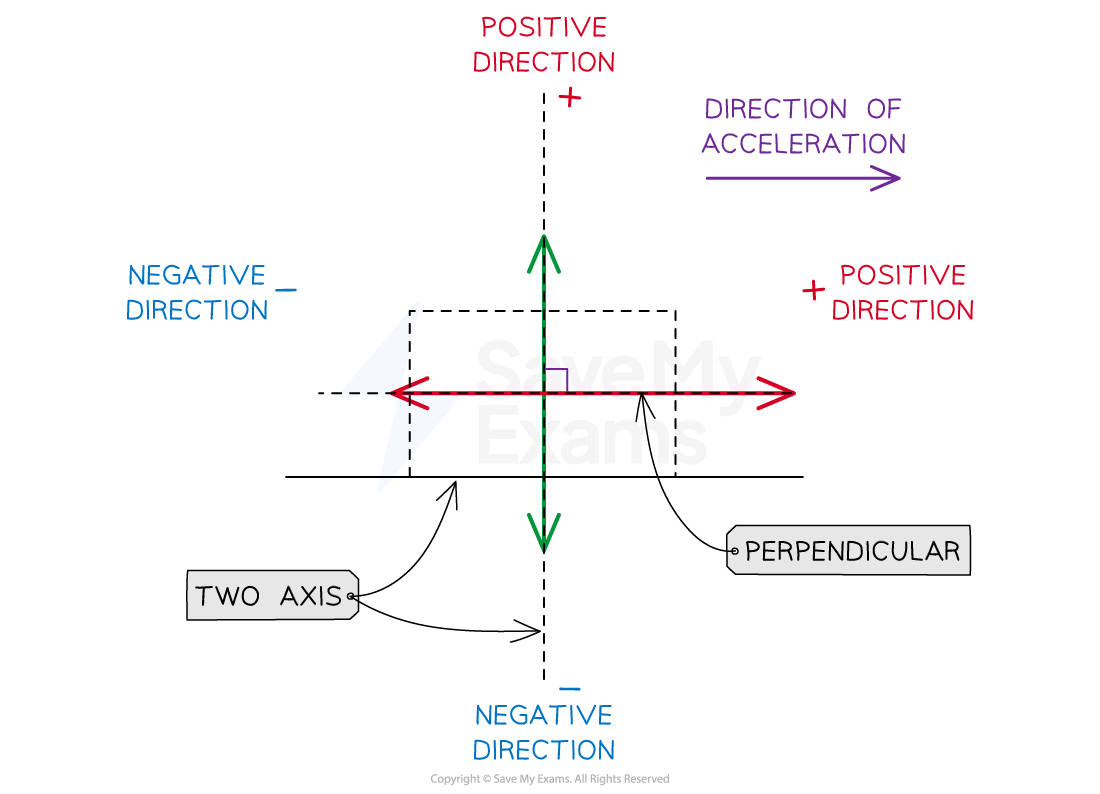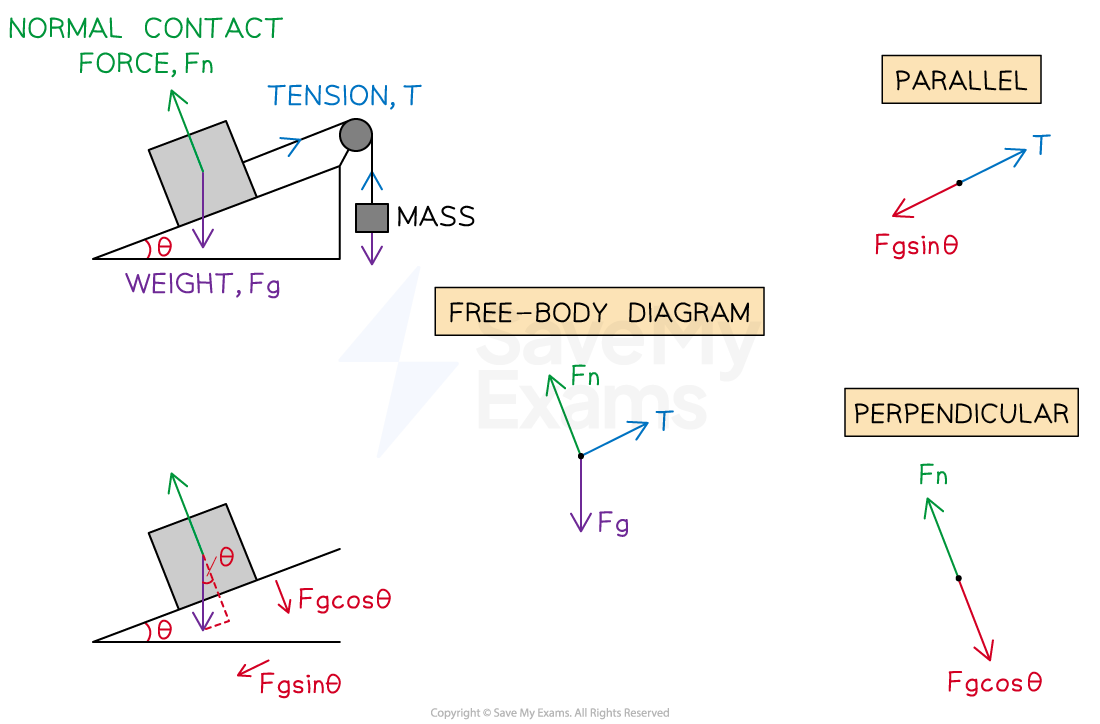Free Body Diagrams (College Board AP® Physics 1: Algebra-Based): Study Guide
Free-body diagrams
Properties of free-body diagrams
Free-body diagrams can be used to:
identify which forces act in which plane
determine the resultant force
Forces are vector quantities that describe the interactions between objects or systems
The free-body diagram of an object or system uses arrows to show each of the forces exerted on the object by the environment
The length of the arrow represents the magnitude of the vector
The direction of the arrow represents the direction of the vector
The length of the arrows must be proportional to their magnitudes
Each force arrow is labelled with either:
a description of the type of force acting and the objects interacting with clear cause and effect, e.g. the gravitational pull of the Earth on the ball
the name of the force, e.g. Weight
an appropriate symbol, e.g.
Examples of forces exerted on objects

A system is treated as though all of its mass is located at the center of mass
The forces exerted on an object or system are represented as vectors originating from their center of mass
Free-body diagram of a suspended object

Free-body diagram of object moving on rough surface

Using a coordinate system
A coordinate system simplifies the translation from a free-body diagram to an algebraic representation
One plane of the coordinate system is parallel to the direction of acceleration
A coordinate system consists of:
two axes perpendicular to each other
a positive direction that is opposite to the negative direction
A coordinate system applied to an object moving on a rough surface

It is common for the x and y axes to form part of the coordinate system
Using a coordinate system is a useful way to measure the angles of forces
Angles can be measured from either axis
This is explained in the revision note Combining vectors
A coordinate system applied to an object with a force at an angle

Inclined Planes
In a free-body diagram of an object on an inclined plane, it is useful to set one axis parallel to the surface of the incline
An inclined plane, or a slope, is a flat surface tilted at an angle,
The angles of each of the vectors can then be measured from the inclined plane and the magnitude resolved
Instead of thinking of the component of the forces as horizontal and vertical, it is easier to think of them as parallel or perpendicular to the slope
The weight
of the object acts vertically downwards and the normal (or reaction) force,
always acts vertically upwards from the object on the slope
The normal (or reaction) force,
always acts upwards perpendicular to the slope
Remember the equation for weight
The weight force,
, is a vector and can be split into the following components:
perpendicular to the slope
parallel to the slope
If there is no friction, the force
causes the object to move down the slope
If the object is not moving perpendicular to the slope, the normal force will be
Forces on inclined planes

Worked Example
Draw free-body diagrams for the following scenarios:
(A) A box being pulled up a slope by a mass on a pulley (resolving the weight into parallel and perpendicular directions)
(B) A man fishing in a stationary boat
(C) A car accelerating along a road
Answer:
Part (A)

In problems such as this, it is best to resolve the forces parallel and perpendicular to the slope
Part (B)

As the boat is not moving in the vertical plane, the length of both arrows must be the same, showing forces of equal magnitude
Part (C)

As the car is accelerating, the size of the thrust must be larger than the size of the friction force
As in part (c), the upwards and downwards forces must be of equal magnitude
Examiner Tips and Tricks
Make sure you:
consider all forces involved in a situation
draw forces as vectors
draw force vectors to the correct size and to scale

Unlock more, it's free!
Did this page help you?